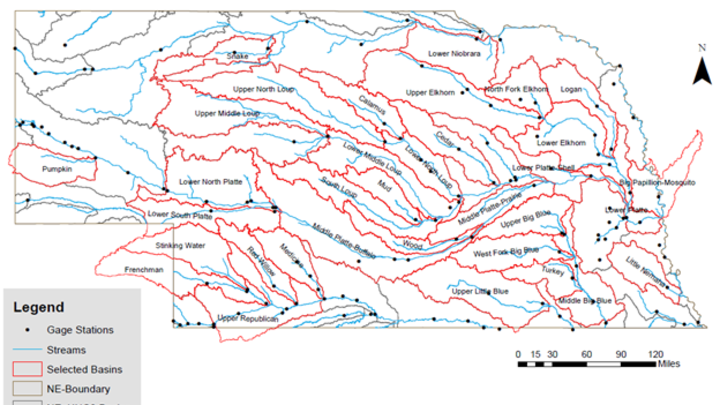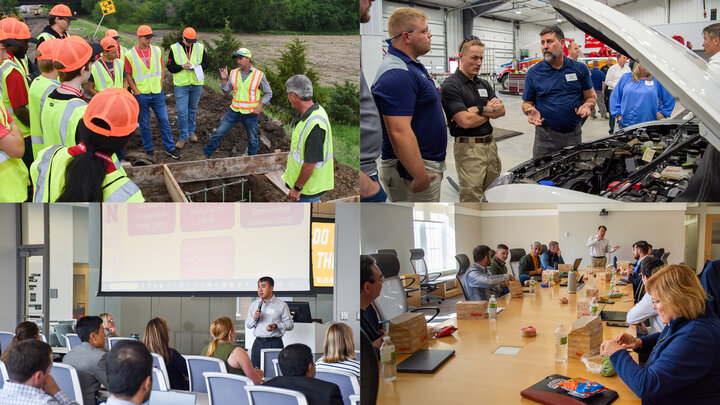In “A Machine Learning-Based System for Predicting Peak Flowrates of Nebraska Streams”, Dr. Tirthankar Roy addressed the outdated regression equations used to calculate flood attributes in Nebraska basins. Peak flow predictions can be significantly improved by updating equations with recent datasets and advanced methods. This study modeled daily streamflow and peak flow in Nebraska streams using new high-resolution datasets and two machine learning algorithms, Long Short-term Memory Network (LSTM) for daily streamflow and Random Forest (RF) for peak flow.
Researchers investigated adding physics-based constraints to the LSTM network, namely mass balance, energy balance, and storage discharge relationship. Although they did not improve results in all cases, they improved performance in several basins and can be added as needed. Additionally, adding newer datasets and advanced machine learning algorithms leads to improved estimates of peak flow.
Using equations from multiple studies to estimate peak flow often yields results that vary, resulting in doubt on their reliability. By modeling peak flow using a suite of RF models, this study aimed to create a more advanced and unified approach to improve overall accuracy. The model used different return periods in 40 Nebraska streams using high-resolution datasets covering atmospheric, hydrologic, soil, and basin morphometric characteristics. The newly developed system outperformed the existing equations, proving its ability to aid in better decision-making during flood disaster mitigation and the design of resilient infrastructure.
This project was funded by the US Department of Transportation via the Mid-America Transportation Center. It was co-authored by associate professor Dr. David Admiraal and graduate research assistant Sudan Pokharel.
Dr. Tirthankar Roy is an Assistant Professor in the Department of Civil and Environmental Engineering at the University of Nebraska-Lincoln and specializes in water resources development, statistics in hydrology, surface water hydrology, exploring environmental research, introduction to water resources engineering, and data science in hydrology.




